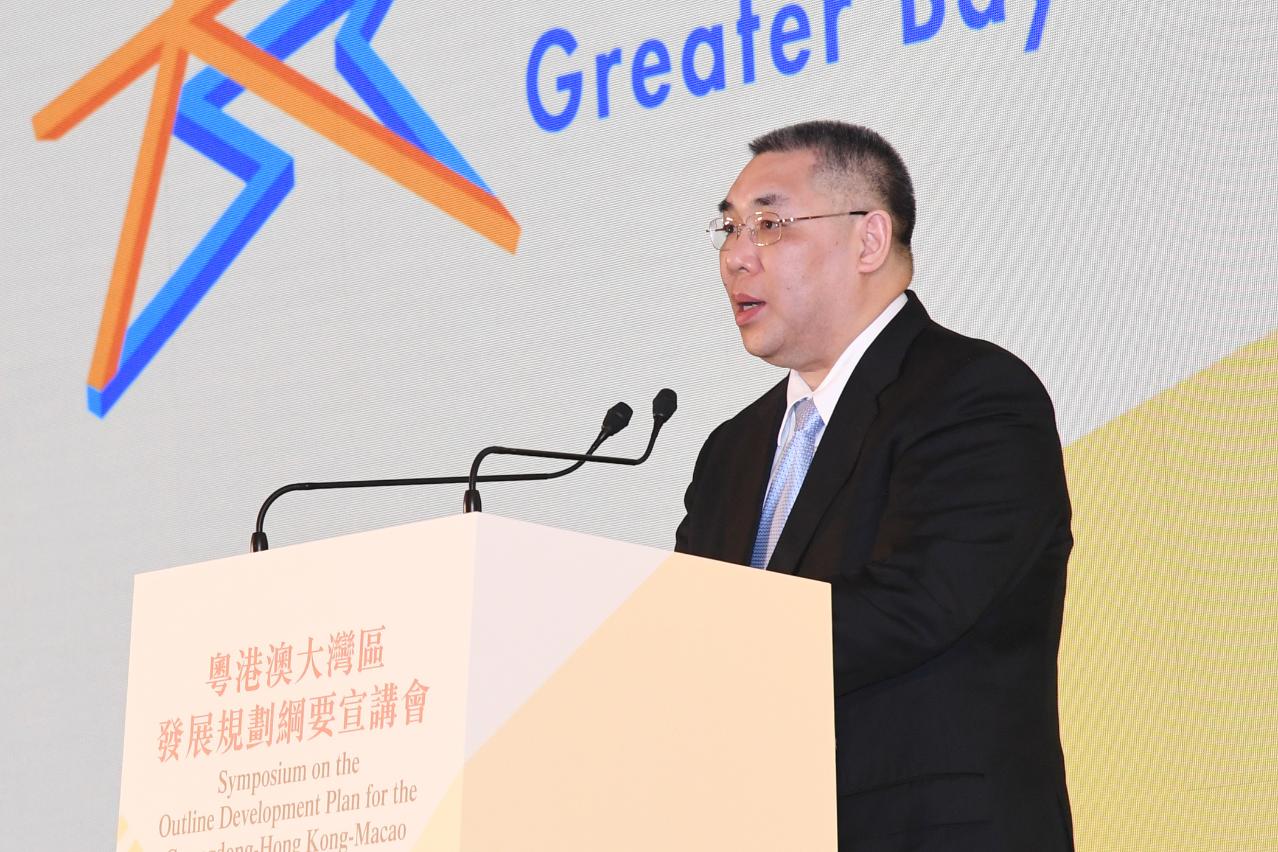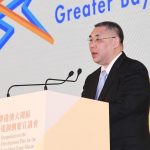 The Chief Executive, Mr Chui Sai On, delivers a speech at a seminar on the outline development plan for the Guangdong-Hong Kong-Macao Greater Bay Area held in Hong Kong.
The Chief Executive, Mr Chui Sai On, delivers a speech at a seminar on the outline development plan for the Guangdong-Hong Kong-Macao Greater Bay Area held in Hong Kong.
Macao will enhance its overall capabilities while forging ahead with regional cooperation initiatives in order to advance the overall development of the Guangdong-Hong Kong-Macao Greater Bay Area (Greater Bay Area).
The Chief Executive of the Macao Special Administrative Region (SAR), Mr Chui Sai On, mentioned Macao’s two-pronged approach in his speech delivered today at a seminar in Hong Kong.
The seminar was jointly hosted by Guangdong Province, the Hong Kong SAR and the Macao SAR and took as its topic the content of the Central Government’s outline development plan for the Guangdong-Hong Kong-Macao Greater Bay Area” and how to implement the plan.
During the seminar, Vice Chairman of the National Development and Reform Commission, Mr Lin Nianxiu; the Chief Executive of the Hong Kong SAR, Mrs Carrie Lam Cheng Yuet-ngor; and the Governor of Guangdong Province, Mr Ma Xingrui, each delivered a speech. Additionally during the seminar, the Director General of the Department of Regional Economy of the National Development and Reform Commission, Mr Guo Lanfeng, introduced details of the Greater Bay Area blueprint.
In his speech, Mr Chui said the promulgation on Monday (18 February) by the Central Government of the outline development plan had provided clear directions and content regarding how to lead joint development for the nine Guangdong Province cities and the two SARs encompassed by the Greater Bay Area.
Macao – as a core city leading Greater Bay Area development – was committed to, and proactively deploying resources for, the efforts to accommodate the city-cluster initiative, said Mr Chui.
According to Mr Chui, the “One country, two systems” principle – implemented in Hong Kong and Macao – was a significant advantage for the city-cluster initiative, differentiating it from other coastal bay-based urban areas in other parts of the world.
The Greater Bay Area initiative would help inject new impetus into Macao’s economic development, in addition to advancing the city’s roles and functions in the country’s reform and opening-up policies, stated Mr Chui.
Mr Chui noted Greater Bay Area cities each had distinctive industries and different specified roles under the outline plan. Macao’s coordinated cooperation with the other cities – making use of Macao’s own unique advantages – would pave the way for wider development opportunities for Macao in terms of realising its goal of adequate economic diversification.
In his speech, Mr Chui stressed Macao would double its efforts in supporting development of the science and technology sectors as well as other innovation-focused industries, in a bid to pursue a goal outlined in the plan to develop the city cluster as an international science and technology innovation centre.
Mr Chui pointed out that – in order to boost the development of science and technology – the Macao SAR Government would spare no effort in advancing a number of ideas. These included: a “Guangdong-Shenzhen-Hong Kong-Macao innovation and technology corridor”, an initiative proposed in the plan; encouragement for local educational institutions to strengthen research on science and technology; and the promotion of closer partnership within the Greater Bay Area between educational institutions.
Mr Chui added that, in response to the publication of the Greater Bay Area blueprint, the Macao SAR Government would organise symposiums and seminars to publicise its content within the Macao community as a whole – and especially among young people – in a bid to encourage the local contribution to the city-cluster initiative.
During the seminar, Mr Chui reviewed some of the work the Macao SAR Government had done locally to accommodate development of the Greater Bay Area.
The Greater Bay Area is a city cluster formed by nine cities in Guangdong Province – namely Guangzhou, Shenzhen, Zhuhai, Foshan, Huizhou, Dongguan, Zhongshan, Jiangmen and Zhaoqing – plus the two SARs, Hong Kong and Macao. It covers a geographical area of 55,904 square kilometres and has a population of 69.57 million as estimated in 2017.


